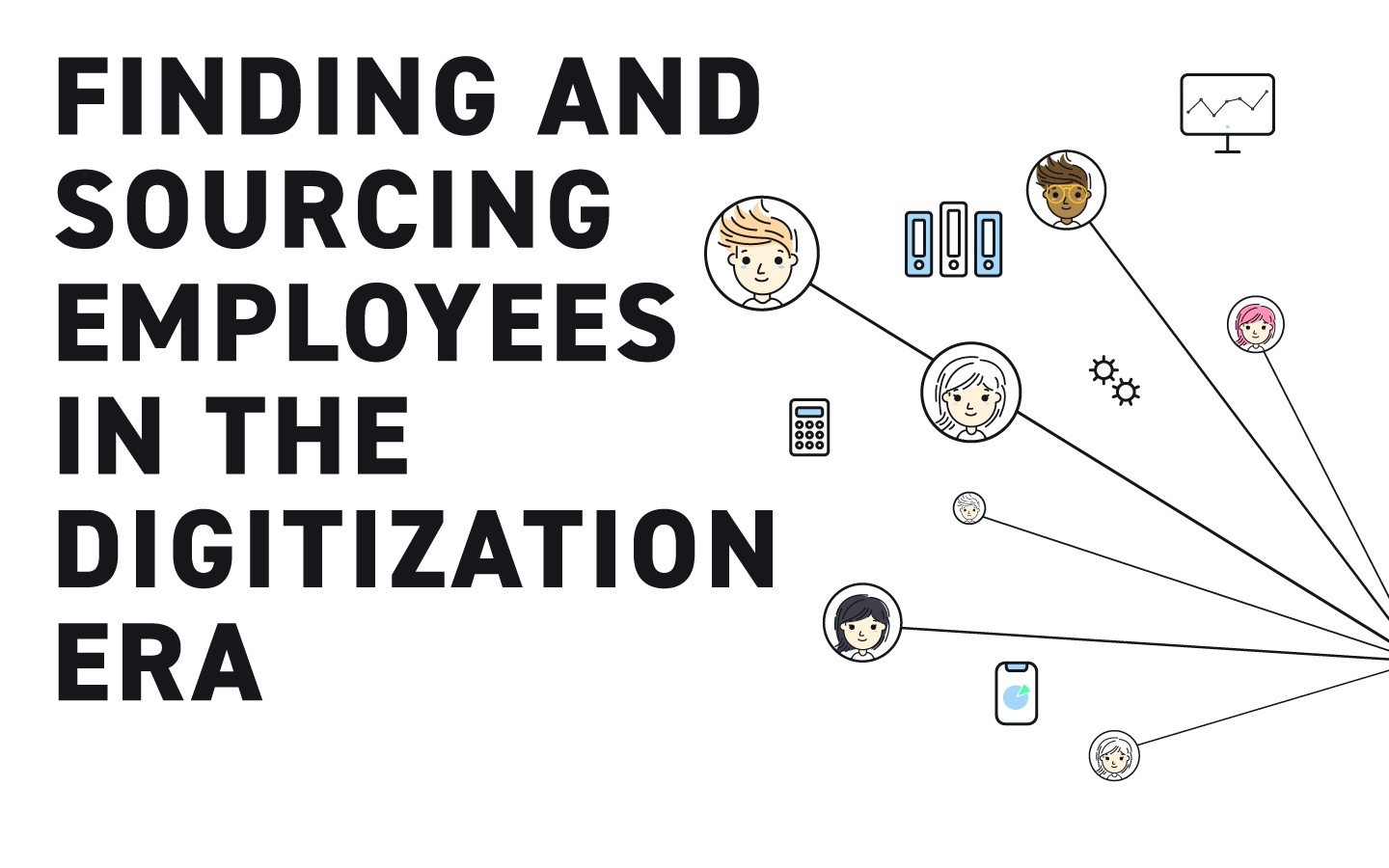If you’re a Recruiter, this economy sucks.
That’s because the U.S. unemployed labor market is down to around 4%. To put it another way, just about everyone that’s employable is already working. That means recruiting for talent has gotten a lot harder. It’s a white-knuckle economy for even the most seasoned, well-networked Recruiter.
In February, the numbers dropped even lower in seven states and held static in the remaining 43. Click here to see the map.
How can HR teams remain successful when the talent pool looks as dry as the Sahara? Turns out it's technology that may provide the leg up that recruiters need to stay ahead in the game.
This article looks at the tech trends impacting the recruiting field. It will help answer some of your most burning platform questions, such as, how can Recruiters leverage technology to work smarter this year? Can software help us find even the most elusive specialty candidates? More importantly, will robots take over the outsourcing function?
Let's Talk About Tech
For years, we’ve been talking about the disruptors, those technology-fueled companies that are changing some of the most stoic and established industries, such as accounting and insurance. They have democratized data and created software that has brought big business tools to startups. Now just about anyone can do more with the right cloud software.
Interestingly, there isn’t one particular technology company that comes to mind when we consider the latest changes happening in the recruiting profession. In fact, the real disruption in human resources right now comes from the digital technology itself. Software allows Recruiters to automate manual processes.
Technology is changing recruiting. The companies that aren’t jumping on the bandwagon are going to lose what is becoming a battle for the best candidates. Because we’re in the thick of the highest employment we’ve seen in a decade, companies are searching intently for ways to set themselves apart.
When it comes to finding the right talent today, we believe technology could make all the difference.
Technology as the Great Equalizer
/Future%20of%20Design%202026%20Blog.jpg?width=720&height=410&name=Future%20of%20Design%202026%20Blog.jpg)
For those of you worried that your recruiting process isn’t as efficient as it should be, don’t worry — there’s an app for that. Technology is smoothing out the candidate application and assessment process, creating better, more searchable data, and more intuitive resume submission processes. ![]()
Eventually, artificial intelligence platforms will handle many of the most labor-intensive functions of the employment process.
THE ROBOTS ARE COMING 🤖
Recruiters and HR Managers do not need to worry that their jobs will be taken over by robots — really. Nothing will take the place of actually getting to know potential job candidates through the interview and networking process. Some of the best recruiters we’ve seen have an intuitive knack for understanding candidate temperament, motivation, and behavior. A computer algorithm will never replace those human-centered search processes.
That said, we can still leverage software tools to work a lot smarter. Here are some ways:
Data
While data isn’t anything new in the talent game, the amount of information and how quickly it can be sliced and diced has radically changed.
According to a survey of 9,000 HR Managers and Recruiters released in the 2018 Global Recruiting Trends report, technologies now use data in ways we never dreamed of a decade ago.
Data is being used to:
- Build better job offers
- Analyze what candidates want
- Evaluate training gaps
- Estimate how successful a candidate will be
- Increase employee retention
- Conduct workforce planning
- Forecast trends in hiring
This data is providing talent teams with information that can be used to improve HR workflows. These tools are helping us work a little smarter at a time when every bit can add a whole lot in a competitive market.
Interviewing
The same report also showed that smarter software is helping talent acquisition teams ramp up candidate interviewing by improving upon human intuition and experience. For example, there are now online assessments that take into account soft skills, as well as hard knowledge.
Some other ways technology is changing the interview process include:
- Video interviews, though nothing new, are being used to speed up the time from application to interview
- Software has replaced traditional trolling behaviors seen in HR firms, so instead of Talent Managers scrolling to find out what’s being Facebooked, the computer does the ferreting
- Sourcing candidates is a much smarter process now, because Recruiters can segment candidates into geographic or talent pools and then communicate with them instantly by text
Of course, technology is helping even stodgy enterprise organizations remake an aging application process. These days if the application takes more than five minutes, the candidate may move on.
Making applying as easy as tapping a text message is crucial to staying current in the employment sector. When was the last time your company looked at the smartphone user interface of your careers page? If your company's platform isn’t mobile-friendly, you’ve already fallen way behind.
Three Key Tech Trends Impacting Recruiting
/How%20to%20Nail%20a%20Phone%20Interview%20Blog.jpg?width=720&height=410&name=How%20to%20Nail%20a%20Phone%20Interview%20Blog.jpg)
In a 4% unemployment market, the competition for candidates is pretty fierce. Dakota Younger of Boon calls it a “recruiting arms race.” He advocates for the use of big tech tools to improve the business of candidate sourcing.
Three of the hottest technologies in recruiting currently include:
1. Automation
What are some of the biggest complaints about recruiting? It’s too slow. It’s unresponsive, because it’s too slow. It’s unfriendly, because it’s unresponsive and too slow. Automation can change a lot of this.In some ways, recruiting can learn from marketing; for your company to survive, it needs to take advantage of automation in order to stay in front of the customer. ![]()
Marketing has been doing this for years. If your organization has a database of resumes, a periodic email discussing what is happening with the company is one way to stay in front of these potential candidates and potential consumers of your services.
Automation can also be leveraged through chatbots. Chatbots can talk directly to candidates, schedule interviews, or interact with them on social media. Software developer Allegis says people don’t mind this at all, but generally prefer the computerized interaction to be at the front end of the recruiting process. Why not use a chatbot to make a crappy application process (collective groan) better, cooler, and more fun?
You can also automate the candidate scheduling process — in fact, the scheduling could take place at the end of the chatbot interaction. Imagine a phone app using a Siri-like back-and-forth that lets candidates have fun while applying? You could pepper testing throughout the process, and at the end, send an email to the recruiter with a candidate score. If the candidate seems promising, automation could even help them schedule a phone screen.
While we’ve seen bits and pieces of all of these functions, we haven't seen them brought together into one streamlined application. Not yet, anyway.
2. Machine Learning
Machine learning enables the computer to change its behaviors based on recursive algorithms that compile user behaviors and then adapt to them. For example, when you gravitate toward a certain playlist on an Alexa-enabled device, the computer will learn from your preferences and make recommendations based on what you’ve selected in the past. The machine recognizes patterns and then reshapes its behaviors to accommodate the trends it identifies.
For Recruiters, this means the computer can learn to spot keywords in databases of resumes, culling worthwhile candidates from a pile. (This is known as an applicant tracking system (ATS) — learn more about them here.) Or the computer could spot industry trends leading to a surplus of available candidates. Could machine learning help you sort through the 5,000 connections in your personal database? Sure.
While there will still be a need for the intangible gut-check that comes from actually speaking with the candidate, machine learning is one way to hone recruiting efficiencies so your HR team is working smarter.
3. Predictive Analytics
Predictive analytics is about using software algorithms to find meaningful patterns in big data. For example, the software could scroll a database of candidates and predict, based on past employment patterns, which of them may be almost ready to find something new. Or it can crunch data on a specific market to determine what types of skills are more available from candidates in that region. It can look at which advertisements seem to be working and which ones are not yielding good candidates.
Predictive analytics can determine the cost-per-placement rate or the time-to-fill ratio. Basically, these are number-crunching programs that look for patterns the human eye can’t discern. They give you a leg up in a way that is intuitive and intelligent.
What About AI?
/What's%20Cool%20About%20Content%20Curation%20Blog.jpg?width=720&height=410&name=What's%20Cool%20About%20Content%20Curation%20Blog.jpg)
The elephant in the 2018 HR office is artificial intelligence. While the technology has been around since the 1950s, it hasn’t been until recently that the idea of computers learning from your behaviors has started impacting the human resource field. AI can be used in all kinds of new ways to help talent executives work faster, smarter, and with a higher degree of success.
What Will AI Do to Recruiting?
Some ways an Alexa or Siri-like set of computer algorithms could help a Recruiter include:
- It could sort through a computer database of social media profiles and resumes to find a suitable candidate
- It could be set to apply facial recognition to video interviews to determine minute details that signal candidate stress points
- It could help you stay in touch with candidates that didn’t make the cut on their first interview but simply needed more work experience before they’d be ready for a role with your company
If you think this is far-fetched, check out an AI chatbot launched to help human resource professionals manage a high volume of applications. The technology selects candidates and engages them in conversation via their smartphone. The conversation is recorded and scored and the details are sent straight to the team’s ATS.
Cool and not scary at all, right?
While the promise of AI has been bandied about for decades, we’re really at a crossroads where the technology is working its way into everything we do. For Recruiters and corporate hiring teams, having technology do a lot of the grunt work will actually help eliminate black hole syndrome — statistics show that 85% of all applicants that submit a resume on traditional corporate recruiting portals never hear back at all. With AI doing the work, there is no chance that your HR team could inadvertently harm your brand by failing to respond to every candidate that applies.
Want to Learn More About AI and Recruiting?
There's a lot of information to digest about AI, bots, and the future of hiring with them, so we made a white paper for you!

In response, a vast array of human resources technology tools continue to enter the marketplace, but in a field where successful relationship-building is paramount, are bots and artificial intelligence the answer? Find out in this downloadable white paper.
How do candidates feel about all of this technology? Can big tech be used to make a big impression on candidates?
The Candidate Experience: Using Tech to Improve Recruiting
/Human%20Centered%20Search.jpg?width=720&height=410&name=Human%20Centered%20Search.jpg)
In the same way that personalization is having an effect on consumer shopping trends, there is a new idea that the candidate experience is going to upend traditional recruiting methodologies. The candidate is now your customer because there isn’t a single company immune to a negative Glassdoor rating. If you treat the candidate poorly by not moving quickly or concisely enough, people are going to know.
Technology, especially tech that displays well on our digital handheld devices, can positively affect every stage of the candidate experience. It can reduce the time from application to interview. It can eliminate inefficiencies when scheduling interviews. It lets Recruiters focus on more meaningful tasks, such as networking or events, and gives candidates a better experience from start to finish.
The truth is that the job application processes were broken years ago. We’ve all gone online and had to fill out laborious details about our job history that the gateway failed to cull from our Word or PDF resumes.
But what if applying for a new gig was a fun, engaging process that embraced technology and used it for the greater good? How about a mobile-friendly process that was fast, easy, and intuitive?
On the backend, how about using tech to automate the myriad of redundant and time-consuming tasks Recruiters spend their days on? What if all the paperwork was done for them and the Talent Acquisition Specialist could simply focus on developing a more human-centered process that engaged candidates in the success of the organization at every step in the process?
The Talent Pipe Revolutionized by Technology
Bottom line, by using technology, today’s Recruiters can reach a lot further into a thinning talent pipeline. While these tools will never take the place of people talking to people, they can do the heavy lifting of those tedious tasks that bog down talent acquisition. In a tight labor market, these tools are needed to help you continue to source experienced candidates for even the most specialized roles.
Curious how to find the talent needed to make use of this new tech? Contact Artisan. From Back-End Developers, Coders, and even Voice UI Designers, we have the perfect talent for your needs.




